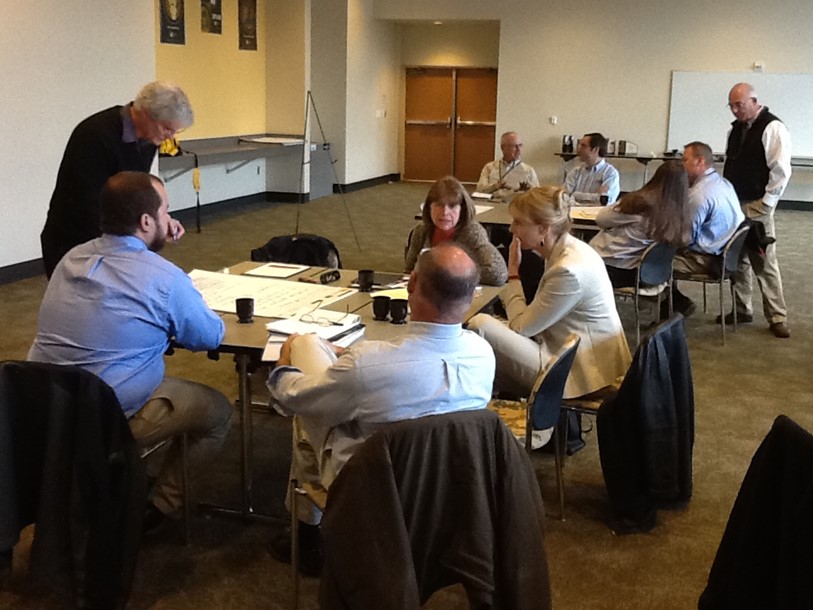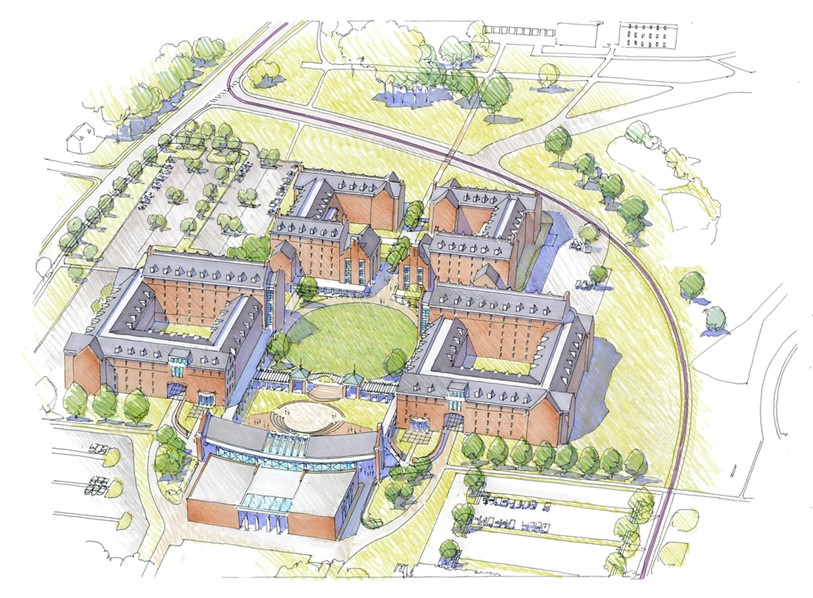Top 10 Questions to Consider for a Housing Master Plan RFP
There is one moment in every student’s life—and probably their parents’ too—that is never forgotten: Move-in day. Who doesn’t recall that moment when you stood facing your college or university residence hall for the first time? After the mad scramble to squeeze your belongings into your new room, your parents or someone else important eventually drove off. It is a coming of age moment, marking an end and a beginning and a new relationship between a student and their new home away from home.
Few places mean more to students—and parents—than on-campus housing. They want it to be safe and secure but equally important, affordable. A school’s reputation for offering top notch residential experiences can be a great recruiting tool and when parents and students visit prospective schools, residence is a critical part of the tour.
But schools face a serious challenge. They have a variety of residences in their inventory with a lot of deferred maintenance and a limited supply of money to keep them up and running much less to make them competitive with off campus providers that offer fitness centers, pools and hot tubs. And, the financial implications of staying competitive require implementation in ten- and twenty-year increments. Whether it is demolition, renovation or new construction, the “what,” “why” and “when” have implications on the steadily increasing total cost of higher education.
For more than twenty years, Hanbury has been working with colleges and universities to develop long-term housing master plans that not only combine a strong vision that addresses recruitment, retention and student social and academic success but are also financially sustainable. Our practice is unique in that it approaches student housing as a programming and design issue not only a market issue. One of our founding members, Mike Evans, liked to say, "You don't have to build what the market wants, but you definitely have to have a market for what you build."

University of Alberta, for instance, completed its first housing master plan in 2006 after the university’s president challenged the institution to be a world class player by 2020. The school’s housing professionals aimed for a world class housing system that would enhance student academic outcomes and become a critical component achieving the institution’s recruiting goals. Numerous studies have shown that on-campus living leads to higher student engagement, graduation rates and retention. As such, Residence Education professionals there have imagined a housing system that addresses every class year of student life—each with specific academic outcomes in mind.
For instance, because first-year students are going through such a massive life change, various student support services for such things as wellness and peer mentoring are concentrated in residence halls. Meanwhile, upper-year students want more independence. As such, they have options of four- and six-bedroom apartment living. Housing for graduate students is concentrated near the center of campus so it is easy for them to head to the lab day or night.
Living and learning are also connected. Alberta recently opened two 35-bed houses, one for law and one for engineering. Living together enables more group studying and interacting with peers that is not so easy in an off-campus apartment.
The school also offers options for gender specific housing and residence hall floors that are academic cohort specific.
Alberta’s housing system now “drives learner outcomes,” says Doug Dawson, the school’s Associate Vice President of Ancillary Services. “We’re not in the accommodation business. We’re in the education business.” Today, 17 percent of the school’s students live on campus. It aims to get that to 25 percent by 2040.
How did Alberta begin their process? One key was a well-crafted request for proposal or RFP. We see far too many RFPs that appear to have been drafted by procurement departments. They’re full of required forms and disclaimers but little insight is provided on what the institution hopes to achieve long term with its housing plan. We recommend that, rather than look at the RFP as simply a tool to get the basics on fees and services, it should be a document that communicates what is important about intentional outcomes.
Based on our experience in looking at RFPs—the good and the bad—we’ve put together a list of the top ten questions that should be asked, and potentially reflected, in an RFP for a housing master plan. To begin, ask yourself these questions before you contact the procurement folks:
- How does student housing mesh with institutional vision? What is the current role of student housing in achieving the University's strategic plan? Do residence goals align with the University’s mission? Knowing the answers to these questions will better help you communicate your desired housing outcomes to consultants looking at the RFP.
- What is the primary focus of student housing on campus? Is it primarily a first-year focus, or do you intend to offer upper-year students options as well? This is a crucial question because housing for first-year students is focused on building community and upper-year and graduate students have an increasing desire for privacy and autonomy.
- Is your housing program a service-based or program-based operation? If your primary aim is to provide a place for students to live, your housing stock may be far different than if campus residence is linked with learning outcomes.
- Regardless of your current housing situation, what are your long-term goals? How do you want your situation to look in ten years? What percentage of students do you want living on campus, and what types and percentage of each type of student; first year, upper year, graduate? Do you have specific goals for international students?
- How can housing help meet the University’s recruitment strategy? Unit types and their cost in a competitive marketplace are important recruiting tools. New offerings can balance out the strengths and challenges of older housing offerings that may be hindering recruitment.
- What will your local market bear? We’ve seen many student surveys that let students opine on housing desires, which often tend to be more lavish than their budgets. For student surveys to be more meaningful, they should also reveal what students can afford. Off-campus housing, especially for older students, can be a big draw. What options do students have when considering on or off campus housing and what will be your intentional target population?
- What are the key features you use when evaluating your housing system against those of your peers? What are the most valuable measures you consider? Is it price and amenities or such things as number and percentage of on-campus residence beds compared to enrollment? Have you considered an independent financial analysis of your housing system to help you understand how to accomplish your goals?
- What factors are most important about the project schedule and deliverables? Understand your budget limits for the plan. Decide what can be compromised if need be. You do not want to disregard a preferred consultant because you asked them for a fee and you think it is too high. Provide for negotiation.
- What is your intended plan for implementation and who will be the decision makers? Traditional design, bid, build, public/private development models, design/build models, and other alternative financing and project delivery models should be evaluated for their validity and impact to the financial assumptions and plan outcomes. If you are open to all options it may be good to state that up front.
- What's on your housing wish list and how do you ensure that this “big idea”can be implemented? The best RFPs help consultants understand what their potential clients want to accomplish with a housing master plan. Often, though, they limit who proposers can talk to before they submit their proposals. The best RFP I’ve seen allowed consultants to schedule a visit with the selection committee to discuss their goals for the plan, special opportunities to consider or how the planning process could be aligned with their budget before the submission was due. An RFP can only provide so much information but giving this extra level of interaction before you pick a consultant is one more way to make the best choice.

